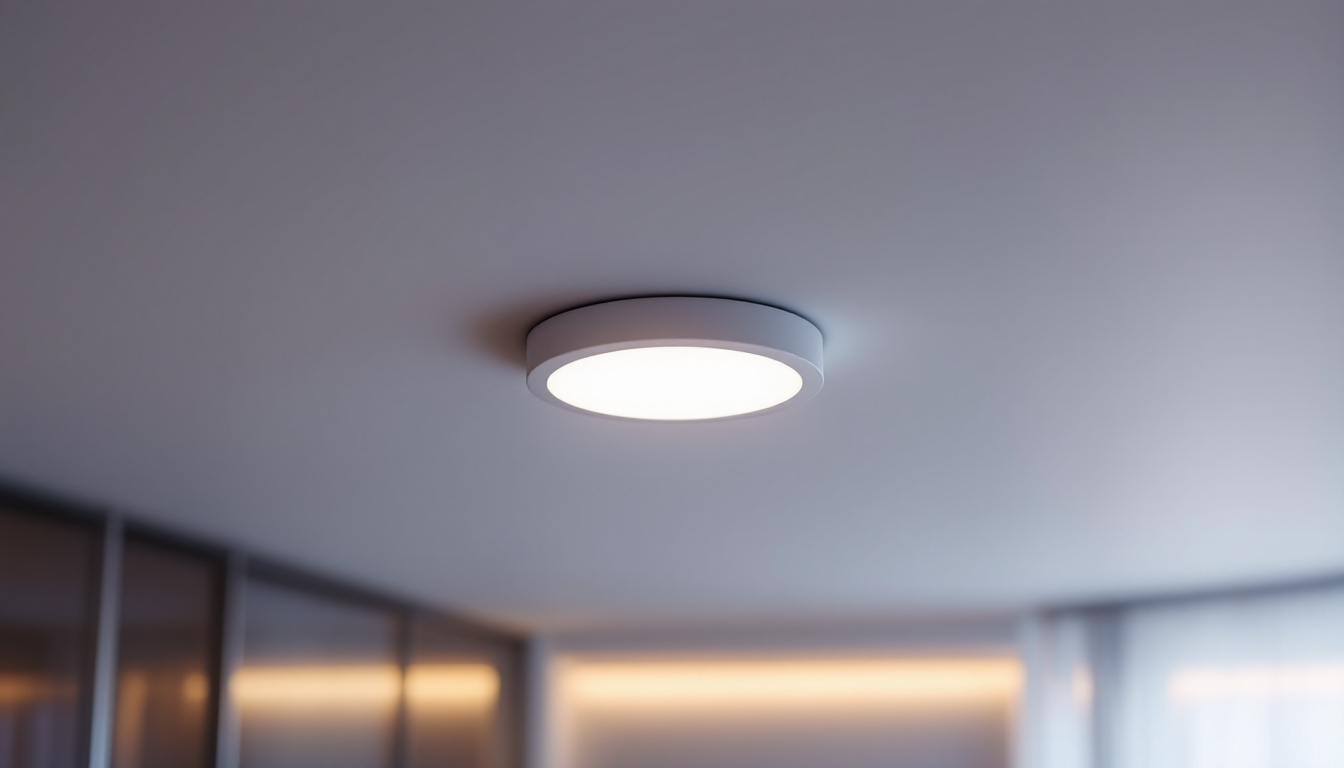
In the world of lighting design, office light fixtures play a crucial role in creating an efficient and aesthetically pleasing workspace. As a lighting contractor, mastering the intricacies of office lighting can elevate your projects and enhance client satisfaction. This article delves into essential resources and insights that can help lighting contractors hone their skills and stay ahead in the industry.
Before diving into advanced techniques and resources, it’s important to grasp the fundamental principles of office lighting. Understanding how light interacts with various surfaces and the psychological effects of different lighting types can significantly impact the success of your projects. Properly designed lighting not only enhances the aesthetic appeal of a workspace but also plays a crucial role in employee well-being and productivity. A well-lit environment can reduce eye strain, improve mood, and even influence the overall energy levels of the team.
Color temperature, measured in Kelvin (K), affects the mood and productivity of office environments. Warmer tones (2700K-3000K) create a cozy atmosphere, while cooler tones (4000K-5000K) promote alertness and focus. Selecting the appropriate color temperature is essential for aligning with the intended purpose of the space. Moreover, the choice of color temperature can also influence how colors are perceived in the office. For instance, warmer lights can make colors appear softer and more inviting, while cooler lights can enhance the vibrancy of colors, making them pop.
Lighting contractors should familiarize themselves with the preferences of their clients. For instance, a creative agency may favor warmer tones to foster a relaxed environment, while a tech firm may opt for cooler tones to stimulate productivity. Understanding these nuances can help in making informed recommendations. Additionally, integrating adjustable lighting systems that allow employees to customize their workspace lighting can further enhance comfort and satisfaction, leading to a more engaged workforce.
Illumination levels, measured in lux, are critical for ensuring that workspaces are adequately lit. The recommended lux levels vary depending on the tasks performed in the office. For example, general office work typically requires around 300-500 lux, while detailed tasks like reading or writing may necessitate 500-1000 lux. Furthermore, different areas within the office may have varying lighting needs; for instance, conference rooms may benefit from higher illumination levels to facilitate presentations and discussions, while break areas may require softer lighting to create a relaxing environment.
Lighting contractors should conduct thorough assessments of the office layout and the tasks performed within each area. This will allow for a tailored lighting solution that enhances both functionality and comfort. Moreover, incorporating natural light into the design can significantly improve illumination levels while also providing health benefits. Studies have shown that exposure to natural light can boost mood and energy levels, making it a vital consideration in office lighting design. By combining artificial and natural lighting, contractors can create a balanced environment that supports the diverse needs of the workforce.
Equipping oneself with the right resources is vital for any lighting contractor looking to excel. From design software to industry publications, there is a wealth of information available to help professionals stay informed and inspired.
Modern lighting design often relies on advanced software to simulate and visualize lighting effects. Programs such as DIALux and Relux allow contractors to create detailed lighting plans, assess energy consumption, and evaluate the aesthetic impact of various fixtures.
These tools not only streamline the design process but also enhance communication with clients. By providing visual representations of proposed lighting solutions, contractors can better convey their vision and gain client approval more efficiently.
Staying updated with the latest trends and technologies is crucial for lighting contractors. Subscribing to industry publications such as the Journal of the Illuminating Engineering Society or Lighting Design + Application can provide valuable insights into emerging practices and innovations.
Additionally, many organizations offer newsletters and online resources that highlight case studies, product reviews, and expert opinions. Engaging with these materials can inspire new ideas and keep contractors informed about the evolving landscape of office lighting.
As workplaces continue to evolve, so do the trends in office lighting design. Understanding these trends can help lighting contractors stay relevant and meet the changing needs of their clients.
Smart lighting technology is revolutionizing the way office spaces are illuminated. With the integration of IoT (Internet of Things), lighting systems can now be controlled remotely, allowing for greater flexibility and energy efficiency. Features such as motion sensors, dimming capabilities, and programmable schedules enhance the user experience and reduce energy costs.
Lighting contractors should familiarize themselves with various smart lighting products and their compatibility with existing systems. This knowledge will enable them to offer clients innovative solutions that align with modern workplace demands.
Biophilic design emphasizes the connection between nature and the built environment. Incorporating natural elements, such as daylight and greenery, into office spaces has been shown to improve employee well-being and productivity. Lighting contractors can enhance this design philosophy by maximizing the use of natural light and selecting fixtures that complement the overall aesthetic.
Strategies for integrating natural light include the use of skylights, large windows, and light tubes. Additionally, selecting fixtures that mimic natural light can create a harmonious balance between artificial and natural sources.
Effective installation and maintenance practices are essential for ensuring the longevity and performance of office light fixtures. Lighting contractors should adhere to industry standards and guidelines to deliver high-quality results.
Fixture placement is a critical aspect of lighting design. Contractors should consider factors such as ceiling height, room dimensions, and the specific tasks performed in each area. A well-planned layout can prevent issues such as glare and shadows, enhancing the overall lighting quality.
Additionally, utilizing a combination of ambient, task, and accent lighting can create a layered effect that adds depth and dimension to the workspace. This approach not only improves functionality but also contributes to the aesthetic appeal of the office.
To ensure optimal performance, regular maintenance of lighting fixtures is essential. This includes cleaning fixtures, replacing burnt-out bulbs, and checking for any electrical issues. Establishing a maintenance schedule can help prolong the lifespan of the lighting system and maintain energy efficiency.
Moreover, staying informed about advancements in lighting technology can prompt timely upgrades. Replacing outdated fixtures with energy-efficient LED options can significantly reduce energy consumption and operational costs for clients.
Building strong relationships with clients is fundamental for lighting contractors. Effective communication and understanding client needs can lead to successful projects and repeat business.
Consultations should be comprehensive, allowing contractors to gather detailed information about the client’s vision, preferences, and budget. Engaging clients in discussions about their goals and challenges can lead to more tailored lighting solutions.
Utilizing visual aids, such as mood boards or lighting samples, can help clients articulate their preferences and facilitate a collaborative design process. This approach not only fosters trust but also ensures that the final design aligns with the client’s expectations.
After the installation is complete, offering ongoing support can enhance client satisfaction. Providing guidance on how to operate and maintain the lighting system can empower clients and ensure they get the most out of their investment.
Additionally, being available for follow-up consultations or troubleshooting can help build long-term relationships and establish the contractor as a reliable resource in the industry.
The future of office lighting is poised for exciting developments, driven by advancements in technology and a growing focus on sustainability. Lighting contractors who stay informed and adaptable will be well-positioned to thrive in this evolving landscape.
As businesses increasingly prioritize sustainability, lighting contractors must consider eco-friendly options in their designs. This includes selecting energy-efficient fixtures, utilizing renewable energy sources, and implementing smart lighting controls to minimize energy waste.
Contractors should also be aware of certifications such as LEED (Leadership in Energy and Environmental Design) that can enhance the credibility of their projects. Understanding the criteria for these certifications can help contractors guide clients toward sustainable choices that align with their values.
The integration of advanced technologies, such as AI and machine learning, is set to transform the lighting industry. These technologies can optimize lighting systems based on occupancy patterns, natural light availability, and user preferences, resulting in enhanced energy efficiency and user experience.
Lighting contractors should keep abreast of these technological advancements and consider how they can incorporate them into their designs. Embracing innovation will not only improve project outcomes but also position contractors as leaders in the industry.
Mastering office light fixtures requires a combination of technical knowledge, creative design, and effective client engagement. By leveraging the right resources, staying informed about industry trends, and adhering to best practices, lighting contractors can elevate their projects and deliver exceptional results.
As the landscape of office lighting continues to evolve, those who embrace change and prioritize sustainability and innovation will thrive. With a commitment to excellence and a focus on client satisfaction, lighting contractors can navigate the complexities of the industry and achieve lasting success.
Ready to take your office lighting projects to the next level? At LumenWholesale, we provide lighting contractors with the superior spec-grade lighting products you need to master any workspace design. Our commitment to quality and affordability means you can access a wide range of top-tier lighting solutions without the burden of inflated markups. Make the smart choice for your business and benefit from our hassle-free bulk buying, complete with free shipping. Elevate your lighting game and ensure every project shines with Wholesale Lighting at the Best Value. Discover the difference with LumenWholesale today.

Discover effective strategies to train your team in using grow lamp fixtures, enhancing productivity and plant health.

Discover the advantages of Type C light bulbs for lighting contractors, from energy efficiency to enhanced durability.

Discover the essential insights for lighting contractors on modern recessed light fixtures.

Discover how lighting whips can streamline projects for lighting contractors, offering efficiency and ease in installations.